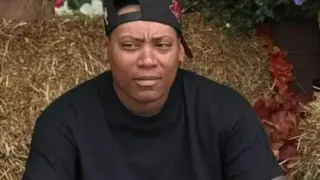June 30, 2017
What's With Wheat? Aussie Nutritionist Cyndi O'Meara on Gluten Intolerance
Winnie McCroy READ TIME: 5 MIN.
As a nutritionist, best-selling author, and founder of Changing Habits, Cyndi O'Meara knows something about food. For over 30 years, she has lived a healthy lifestyle, eschewing fad diets over good food choices. But it wasn't always that way. For a while, she had aches and pains, foggy brain, and was getting fat.
"I was brought up on amazing food, and when I was 13 became a vegetarian, which my mother was distraught about," said O'Meara. "When I got pregnant at 29, I realized I needed meat. But about seven years ago, I got a lot of aches and pains, had dry skin and hair, and was putting on weight for the first time in my life."
She went on an elimination diet of lean meats and winter veggies. When she reintroduced wheat, her aches and pains returned. She started to question why wheat is now linked to so many health problems and ended up creating the "What's With Wheat?" documentary.
In the 90-minute film, experts discuss people's growing intolerance to wheat, which has risen with its prevalence. Historically, cultivation of wheat allowed us to stop being hunter-gatherers and become an agriculturally-based society instead.
The revolution of hybridized wheat grain provided a new market for the chemicals used during World War II. Farmers focused on the yield of the crop rather than its sustainability, and the wheat became less resistant to disease. So they poured on more chemicals, like glyphosate, many of which are still unregulated and very poorly monitored and measured.
"Not only were we destroying the nutrition of the plant and how we were consuming it, but also destroying our body's ability to digest it. Put those two combinations together and what you're left with is the perfect storm of insidious events w our health caused as our result of playing with nature," said O'Meara in the documentary.
Where grains once took days to be transformed into a loaf of bread, now that process is complete within two hours. The wheat no longer has time to break down the proteins that wreak havoc in the body. We've thrown away culture and tradition, and become reliant on grains that are doused with chemicals ten times in their life span, then fortified with synthetic vitamins or mined minerals, ruining the natural balance.
As a result, people's diets are now heavy in inflammatory compounds and riddled with foods that kill gut flora. This manifests itself differently in each person but can cause Type 2 diabetes, obesity, autism, migraines, asthma, panic attacks, depression, skin rashes, thyroid problems, joint pain, kidney problems, and neurological disorders.
Some experts even believe gluten triggers autoimmune conditions. And worst of all, wheat products aren't just in food: you can find them in cosmetics, shampoos, vitamins, medications, cleaners, and even kids products like Play-Doh.
O'Meara now travels the world educating people about the six-week program she's created to phase out wheat and encourage people to make smarter choices about what they put in their body.
"I've done it for so long, it was something that became a no-brainer," said O'Meara. "First came the Elimination Protocol, the most stunning thing I ever did. I eliminated everything from my diet that could be a problem because I didn't know what was causing me to feel bad. I left meat, vegetables, and a few fruits. In three weeks, I lost 18 lbs., my aches and pains disappeared, and I had clarity of mind like never before. So, I first created a program based on that, to help people look at everything that could be impacting their health."
She starts clients off with a similar health self-assessment, because people have so many different health issues that they react even to the Elimination Protocol, feeling sick and tired as their body slowly begins eliminating toxins. The documentary suggests that to feel good, you need to get back to the hunter-gatherer model.
"When you start to eat well and eat the right foods, your body will tell you," said O'Meara. "The calorie-in, calorie-out program is the worst theory; weight is not about energy moving in and out, it's about your fat cells. When you have no fat cells, your body releases a hormone that tells you to eat. If you have too many fat cells, your body becomes resistant to the hormone, and you eat more than you need. I don't just put you on a diet; I teach you."
"Most gluten-free food is terrible, full of binders, starches and other grains that are not necessarily prepared properly," said O'Meara. "You need to use heritage grains like emmer wheat, selk, and kamut - these traditional grains rather than modern-day wheat. You can also find rice noodles and buckwheat soba, and do spiraling with vegetables like zucchini and carrots. There are alternatives out there, but you need to read the ingredients and make sure they are made with real foods and not chemicals."
If you're experiencing moodiness, bloating, weight gain, or foggy brain, gluten may be the culprit. Check out "What's With Wheat" and find out for yourself.
For more information, visit www.whatswithwheat.com






